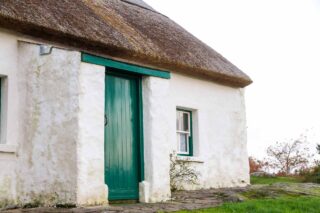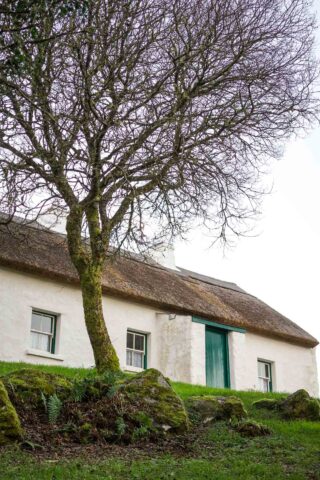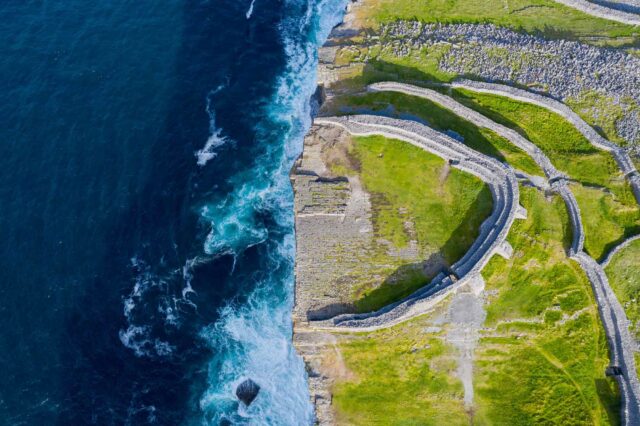2016 saw Ireland commemorate the 1916 Rising, and the execution of its most famous leader Patrick Pearse. This is the role that Pearse is most remembered for; it was he who, having been appointed President of the Irish Republic, read the Proclamation of the Republic from the portico of the General Post Office on O'Connell Street in Dublin.
What led the 37-year old school teacher down this path? This is the story that is told at Teach an Phiarsaigh, the traditional three-roomed cottage which Pearse had built for himself as a summer home, in Ros Muc, Connemara, in 1909.

Patrick Pearse’s first public role was as a language-activist. From his early days he was fascinated by an Ghaeilge, the Irish Language. He joined Conradh na Gaeilge, which was campaigning for the preservation of the language where it still existed, and its revival elsewhere. Pearse quickly rose up the ranks of the organisation. He was appointed to the Executive Committee in 1898, and in 1903, aged 23, he was appointed Editor of the CnaG newspaper An Claidheamh Soluis.
In 1900 Connemara was one of the strongest Irish-speaking regions in the country. It was also one of the country’s most deprived areas, and its residents were stigmatised as poor, uneducated and dangerous by the likes of Punch magazine. Pearse first visited the area in April 1903 at the invitation of a local school teacher who had set up a branch of Conradh na Gaeilge and was teaching adults to read and write Irish, something that was rarely taught in schools at the time. Pearse immediately fell in love with the place and the people. He returned the following June to witness the traditional St. John’s Eve bonfires, and he returned to Ros Muc every summer thereafter.
Pearse purchased a plot of land on the banks of Loch Oiriúlach in 1905 and his cottage was complete by 1909. It was remarkable at the time that a middle-class Dubliner such as Pearse would choose for his holiday home a thatched cottage, then considered a dwelling of the poor. But Pearse had huge admiration and respect for the people of Ros Muc and wished to live among them as much as possible. He told a friend ‘We could have here a little Gaelic kingdom of our own.’
Colm Ó Gaora, a boy during Pearse’s early visits, described his activities: ‘Pearse didn’t hold himself aloof from the people in the area. He would frequent the cabins of the poor people, talking and exchanging lore with the old-timers at their firesides, but even more often listening and observing their wisdom.’

Pearse was the author of several short stories and plays, nearly all of which are set in the area around his cottage in Ros Muc. He made use of the resonant local place names to firmly plant his stories in the soil of Connemara. The people of his stories are poor, but honest and hardworking. The children, who are so often the main characters, are adventurous and make their own amusement, but are never far from their parents’ protective eyes.
His view of the Irish-speaking people of Connemara may have been rose-tinted, but his affection was genuine. He was particularly outraged by how the English-speaking education system failed Irish-speaking children. ‘The Irish-speaking child is the most important living thing in Ireland today… And he has within him the wondrous power to hand down this growing tradition to countless future generations… Daily and hourly we come between him and the fulfilment of his destiny. We do so each time we speak to him in English in his home; when we teach him the English catechism in church and preach to him in English from the alter, when we send him to a school in which he reads writes, spells, works sums, talks and is talked to — we do not write ‘taught’ — all day long in English. We end by actually killing the vital spark of Irishism within him.’

Back in Dublin Pearse was becoming more and more radicalised. He looked forward to the implementation of Home Rule, which he hoped would give control of the education system he was so critical of to a Dublin parliament. He was outraged by the failure of Home Rule and became convinced that only full independence would lead to a revival of Irish culture. In the lead up to the First World War, the cult of the gun spread across Europe like a virus, and like millions of other Europeans, Pearse embraced it. In 1914 he joined the Irish Republican Brotherhood, which was planning a rebellion against British Rule.
Pearse’s friend and colleague Desmond Ryan accompanied Pearse on his final visit to his Ros Muc cottage in 1915. Ryan remembered a happy summer of long bicycle rides and late-night political discussions. The holiday was interrupted by news of the death of the old Fenian leader Jeremiah O’Donovan Rossa in the U.S. He was to be buried in Dublin, and Pearse was to give the graveside oration. Pearse spent his final week in Ros Muc composing the oration. He closed the door of his cottage for the final time, and set off for Dublin to deliver the famous words that set the scene for the Easter Rising, ‘the fools, the fools, the fools! They have left us our Fenian dead, and while Ireland holds these graves, Ireland unfree shall never be at peace.’
About the Author
Cillian de Grás is the Supervisor Guide at Dún Aonghasa and Ionad Cultúrtha an Phiarsaigh, Conamara. He studied History and Medieval & Celtic Studies at Maynooth University and Trinity College, Dublin. He previously worked at the National Museum of Ireland, The Hunt Museum and Castletown House, and has published articles on medieval history and literature. He lives on Inis Mór, with his family.


